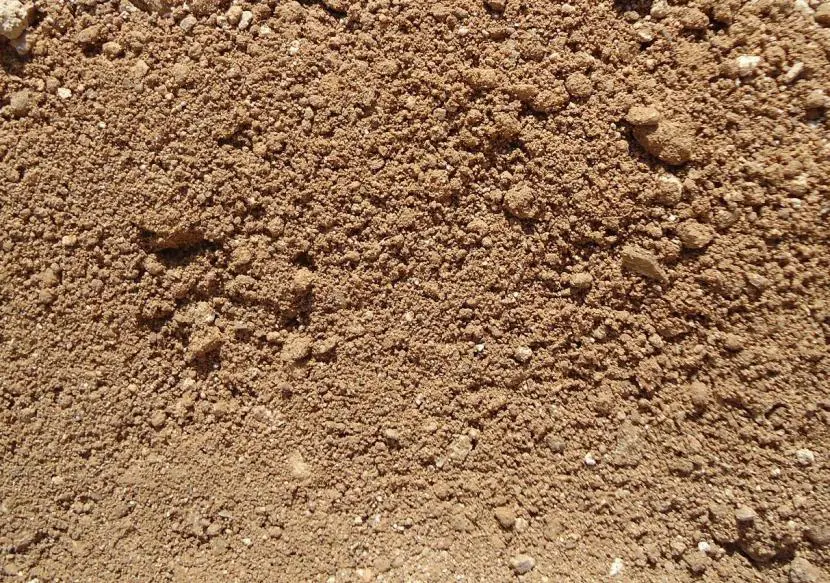To grow certain plants we usually worry a lot about the weather. “Will they withstand the high summer temperatures? Will they withstand frost? Will they be able to live only with the rain?” This is something completely normal, not in vain, plant beings depend a lot on the climate to be able to adapt or not to a place. But what about the ground?
The land where the roots will develop is equally or more important if possible. In it are the nutrients they need to be able to feed and grow, and if it is not the right one for them they will not be able to get ahead. For this reason, before planting them we have to know what characteristics they have , and this is done by determining the texture of a soil. The question is, how is it done?
Index
- 1 What is soil texture?
- 2 Why is it important for plants?
- 3 How to determine the texture of the soil in our garden?
What is the texture of a soil?

When we talk about soil textures we refer to the particles of different sizes that make it up. These particles are classified as sand, silt and clay, which are found in different proportions in each type of soil. Thus, three types of soils are identified, which are:
- Clay : It is made up of 45% clay, 30% silt and 25% sand. It retains water and nutrients, but its porosity is low, which means that drainage is not good since it quickly becomes waterlogged. Among the plants that best resist, we highlight those of Mediterranean origin: almond trees ( Prunus dulcis ), carob trees ( Ceratonia siliqua ), fig trees ( Ficus carica ), olive trees and wild olive trees ( Olea europaea and Olea europaea var. sylvestris ), among others.
- Sandy – is made up of 75% sand, 5% clay, and 20% silt. This type of soil, unlike clay, allows great aeration. But this is a problem for many plants: it loses moisture very quickly, and with it, the roots cannot absorb the amount of nutrients they need. However, there are many plant beings that grow well on it, such as cacti , succulents , and even grass .
- Loam – This land has what we call medium texture. It is made up of 45% sand, 40% silt and 15% clay. It is the ideal for most plants, since it retains water and its nutrients but at the same time has good drainage.
Why is it important for plants?

Many times we are told that the soil is very necessary for our plants, but why? What makes it the best medium to grow them?
- It contains nutrients : over time living beings, both plants and animals, there comes a time when they die. In doing so, first the large animals, then the small ones, and later the insects and microorganisms, decompose them. Thus, all the nutrients contained in their bodies serve as fertilizer for the soil and, therefore, for the plants.
- They absorb water : depending on the texture, they will absorb more or less, but thanks to this water the roots can have these nutrients. Otherwise it would be impossible.
- They allow the roots to be aerated : the same, it will depend on the texture, but only if a soil contains oxygen will it be able to have plant life growing in it, because although it may not seem like it, the roots also breathe through their pores 🙂 .
How to determine the texture of the soil in our garden?

If we intend to plant some plants but we have no idea what texture our soil has, we can do the following:
- First, we’ll take a soil sample.
- Now, we will separate the fine earth, that is, all the particles smaller than 2mm, from those that are larger, such as gravel and stones. Fine earth is the mixture of sand, silt, and clay.
- Then, we will fill a bottle with 5cm of fine soil.
- Next, we will fill it almost completely with water and wait an hour.
- In the background we will see the layer of sand.
- In the center the slime.
- In the upper part the clay.
- Fragments of organic matter can float on the surface of the water.
Now, it only remains to calculate the approximate proportion of each.
- We have to measure the height from the bottom of the bottle to the last layer. Suppose there are 17 centimeters.
- We now measure the layer of sand. We assume that it measures 1 cm.
- Then we just have to use a rule of 3 to calculate the percentages: if 17cm is 100%, what is 1cm? (1×100)/17 gives us about 5.9.
- On the triangle we draw a line parallel to the silt line starting at point 5.9.
- Now, we do the same with the slime, measuring from the height at which its layer begins to appear, that is, in this case at 1cm. If our result is 6cm, we calculate (6×100)/17 which would give us about 35.3. And we draw the line parallel to the clay line that starts at 35.3.
- Finally, we have to join the three lines.
With these results, we could be clear that our soil is clayey.

With these simple steps, we will be able to know what texture our floor has.


One thought on “How is soil texture determined?”